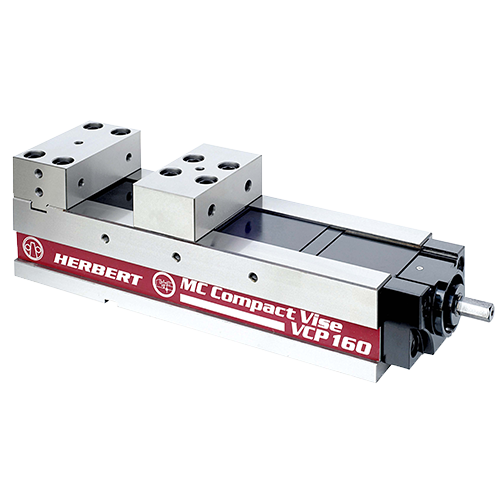What’s New
The History of Machine Vice

A machine vice is a tool that has been used for centuries to help people with a variety of tasks. The vice is a simple device that consists of two jaws that are connected by a screw. The jaws can be opened and closed by turning the screw. The amount of force required to turn the screw varies depending on the size and type of material being clamped.
In this blog, we will discuss the history of machine vice, how vice used to exist years ago, and what changes have been brought in this clamping device in this modern era.
History of Machine Vice
The invention of clamps with threads throughout the middle times led to the development of the clamping technique. The transition from clamping methods involving wedges and hammers to clamps with threads in the middle ages was a key landmark in the evolution of this vital instrument into its modern form.
The breakthrough to the ideal use didn't occur until the parallel vice's invention in 1750, on which the sliding jaws were directed on horizontal adjusting slots.
The first cast iron vice was created in England in 1830. It was simple to mold liquid iron into any mold. Cavities, or air pockets, frequently appeared in the cast during pouring. As a result, the construction was fragile and porous. Breakage occurs as a result of insufficient resistance to more difficult tasks.
Iron vices from this era weren't the best because they were formed from liquid iron, which left the forging framework weak and brittle. As a result, the vices frequently broke under stress.
For this purpose, high-quality unbreakable vices and safety-critical components for the automotive sector, for instance, are constructed of steel. Forging unifies the steel's structural composition. The issue of exact shaping was resolved with the invention of the jackhammer and its heavy pounding capacity, as well as the use of forges with strict tolerances.
To address this issue, until the quality of cast iron was improved, high-grade unbreakable vices were manufactured from forged steel in the late 19th century. Due to advancements in the manufacturing process, vices have come a long way since the early days of the parallel vice.
The basic design of a vice—two parallel jaws that can be adjusted to grip objects of different sizes and shapes—hasn't changed much, although vices nowadays are built of much stronger cast iron and steel than they were in the past.
There are now many different forms of vices thanks to development. Recently, other machine-vice varieties have been developed to meet the demands of particular applications.
A Journey from Historical Vice to Modern Machine Vice
Due to its nodular graphite inclusions in its microstructure, modern machine vises are made from either cast ductile iron or forged iron.
A modern machine vise could contain extra features that weren't present in earlier vises in addition to being manufactured of better materials. One such feature gives you greater freedom in your vise configuration by allowing you to rotate the vise head in a circle. The vise's ability to have both a standard vise jaw and a more specialized set of jaws, such as a pipe jaw, maybe another feature.
Additionally, some contemporary machine vises may have interchangeable jaw covers and teeth that enable a gentler or more aggressive clamping surface depending on the project's needs.
Lastly, there are two types of modern machine vises: fixed and mobile. Bolting secures a stationary vise to a work surface or table. It loses mobility as a result of being more robust. When purchased, a mobile vise frequently includes a clamp that enables you to mount the vise to various surfaces as you work. Mobile job sites in particular may find movable vises to be more practical to utilize despite their tendency to be smaller and less durable.
With the bells and whistles on newer vises, the underlying technology is the same as that used in earlier models. A lead screw used to join two parallel blocks together creates clamping pressure.
Epilogue
Though vices have been transformed from simple to more advanced and upgraded machine vice, the basic purpose of vices is still the same. Machine vices clamp a workpiece within their jaws to hold it in place. The jaws securely retain the desired object once they have been positioned around a workpiece, allowing operations like cutting, drilling, gluing, and filling to be carried out on it.
When using a machine tool, such as a drill press or milling machine, a machine vice is used to keep a workpiece firmly in place. Though clamping varies from vices used for metalworking and woodworking because it is connected to a machine tool's table rather than a workbench. To prevent the user's hands from gripping the workpiece while drilling, milling, or performing related operations, a machine vice is fastened to the drill press or milling machine's table.
In addition to perfecting the production processes, HERBERT personnel improved the models by the tenet that "little details have tremendous significance". The spindle was therefore placed to prevent lost motion, for example using a pressure disc, spring, and snap ring. The modern HERBERT machine vice includes forged jaws as default, a shielded spindle location, a centrically adjustable guide, and an advantageous low clamping capability due to its slender design and drop-forged guide rails.
Contact HERBERT, if you want to buy a machine vice in Taiwan.
